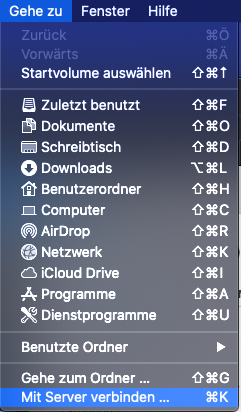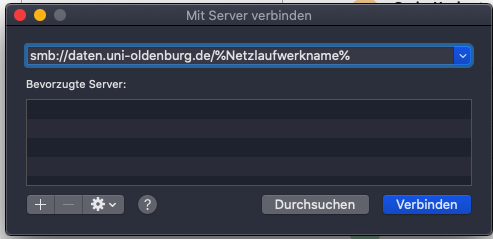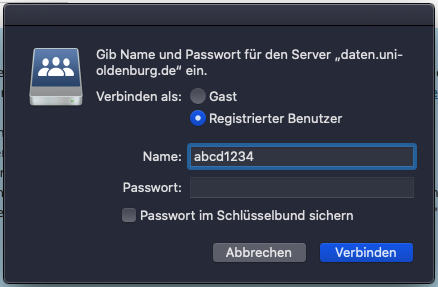Connect L-drive from home
Connect L-drive from home
- In order to be able to access the Home Directory data directly from home, the computer should not only have a broadband connection (e.g. DSL) to the internet, but must also be connected to the campus network via VPN tunnel (see Network Access).
- Right-click on the desktop icon "Network Environment" or in the Explorer menu on "Tools" and select "Connect Network Drive". A dialogue will then open in which you must select the drive letter and folder. For example, enter "L:" for the drive and enter the following line for "Folder":
\\daten.uni-oldenburg.de\YOUR_ID
"YOUR_IDENTIFICATION" must be replaced by the identification of your personal university account. The identifier always consists of four letters and four digits in the form "abcd1234". Then click on "Connect under a different user name" and enter "w2kroot" as the user name, a backslash (backslash) followed by your identifier (={number}) and your password (see Figure 2).  Picture 1
Picture 1
Picture 2
Then click on "OK" and "Finish". After the network drive has been successfully connected, a new Explorer window will open. Your L: drive should now be displayed.
Restrictions:
- You can only connect one home directory per computer.
- On some PCs the "Client for Microsoft networks" is not activated.
- A firewall can hinder access. Nevertheless, never switch off the firewall. Set it up as you need it or use the operating system firewall.
To quickly access files on your L-drive, you also have the option of doing this in Stud.IP. To do this, click on the down arrow at the top right in Stud.IP and select "Cloud storage". If "Cloud storage" is selected, the scan folder must first be mounted in the cloud storage as an external drive.
macOS - Device
In macOS, network drives are mounted as follows.




